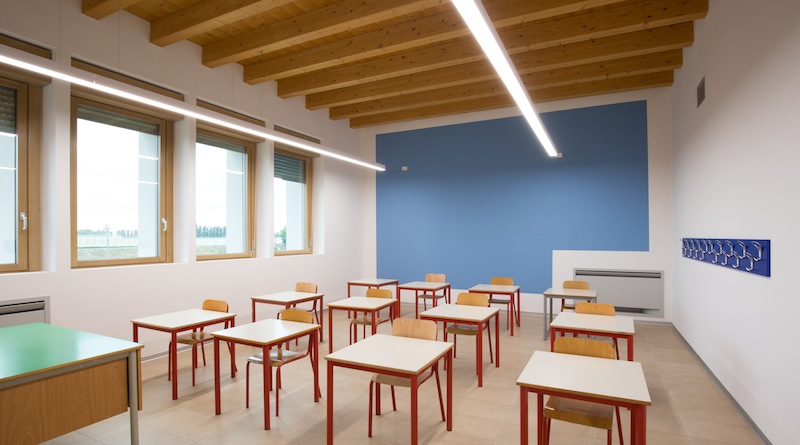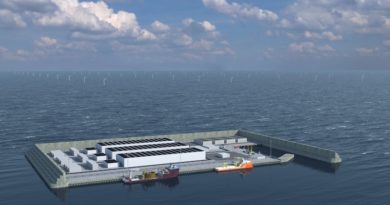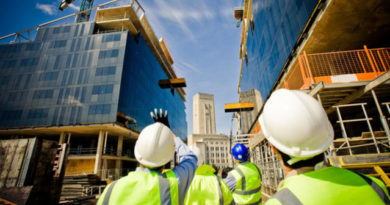
Our road to Paris starts with renovating our buildings
As buildings account for 40% of Europe’s energy consumption and over one third of its greenhouse gas (GHG) emissions, they are central to the continent’s energy transition.
It is clear now that if no tangible progress is made in decarbonizing the building sector in the near future, we shall fail to meet our commitments under the Paris Agreement.
Energy efficiency progress made over last two decades in the EU has yet to offset the increase in floor space and changing occupation patterns. Space heating still accounts for over two thirds of household energy consumption and the demand for air conditioning is on the rise.
Worryingly, at a global level, the slowdown in energy efficiency improvements contributed significantly to the increase in GHG emissions in 2017.
On matters pertaining to the climate and energy, we can certainly recognize and acknowledge the positive impact of EU- driven legislation.
For example, new build requirements are, on the whole, well on track with the Energy Performance of Buildings Directive (EPBD) and the drive towards near- zero energy buildings (nZEB) standards is changing the traditions in construction and, thanks to higher volumes, reducing manufacturing costs.
However, the large-scale transformation of our existing building stock has yet to happen:
new build represents, on a yearly basis, only 1% of the total building stock, with over three quarters of the current stock being built prior to the existence of any energy performance requirements.
As a result, only about 10% of European buildings are classified A or B on the energy performance certificate (EPC) scale. With today’s renovation rates (stagnating around 1%), it is going to take over a hundred years to renovate the EU building stock.
Given the scale and urgency of the renovation challenge, and considering the too timid progress made in renovating the stock, we could question whether this is actually feasible, affordable, or even if there are any alternative solutions to reach our decarbonisation goals.
First, we believe that it is technically feasible to bring our building stock up to a level of high energy efficiency and low carbon standards, since most of the required passive and active technologies already exist.
These technologies typically include insulation, airtightness, glazing, ventilation, lighting, heating systems and controls.
In a Group like Saint-Gobain which realizes 44% of its turnover in renovation markets, innovation remains essential to develop new solutions, and improve their performance, facilitate their installation, and enhance the customer experience. Among our products sold today, one out of four did not exist five years ago.
The technology is there, but what needs to become common practice is a faster deployment of those solutions, at a much greater scale. Importantly, we need to move away from a silo approach to undertaking energy renovation steps.
Holistic renovations, implemented at once or through coordinated steps, need to be mainstreamed in the interests of savings and comfort. This is where tools such as building renovation passports can help, but also better training of the workforce is needed.
The digitalisation of the construction sector also offers a great opportunity to better organize renovation.
Second, the affordability question is actually multifaceted. Estimated investments of €100bn per year to renovate the EU building stock sound quite substantial.
Yet this figure has to be compared to energy infrastructure costs which are to some extent avoidable if energy demand durably decreases, e.g. as a result of peak demand reduction thanks to insulating buildings.
At an individual level, we often forget that most energy improvements are undertaken in conjunction with other works which can be driven by comfort, technical, or aesthetic considerations, or simply linked to a change in ownership.
Beyond that, the question of affordability has to be addressed alongside the cost of non-action, meaning energy dependency, air pollution, loss of asset value, low productivity and poor living conditions, to name but a few.
And here, there is a twist: Can we afford, in Europe, in the year 2018, to see 1 in 10 people unable to keep warm in winter? The hidden costs of our leaky, damp and cold buildings concern physical and mental illness, inability to recover after hospitalization, or social exclusion starting at school age.
In France, we have over 7 million buildings in energy class F or G, the sadly famous “energy sieves”, of which 4 million are occupied by low income households.
Too many people are being left out of the energy transition question.
Third, is there any serious alternative to deeply renovating our building stock? As tempting as it may sound, it will not be possible to reach a decarbonized building stock in 2050 without significantly reducing the energy consumption in buildings.
As reminded by abundant studies including the recent analysis by the Global Alliance for Buildings and Construction (GABC), decarbonized energy supply will only partly solve the problem.
A number of clean, modern heating technologies, e.g. heat pumps, are designed to work in interaction with well-performing building envelopes.
But also, increasing the share of renewable energy supply in buildings without undertaking the necessary energy efficiency improvements would limit their respective potential.
In a systemic perspective, efficiency gains support the high penetration of renewable energy sources, and vice versa.
At building level, switching supply does not increase comfort or health.
It is energy efficiency improvements, undertaken in a sound, logical and holistic manner, that trigger enhanced living conditions such as thermal, acoustic and visual comfort, as well as indoor air quality.
In short, postponing action to tackle the building renovation challenge would not only make the overall energy transition more expensive and risky.
It would also fail to engage EU citizens in a positive manner in the overall decarbonisation journey, when they should be the first to get involved and benefit from EU leadership in this field.
Buildings hold this formidable power to enable tangible reductions in GHG emissions, while making us feel better and healthier. They have this ability to bridge policy ambitions and consumer expectations on an easy converging path.
As reminded by the latest Saint-Gobain OpinionWay survey, 90% of French people think that comfort at home has a positive impact on their wellbeing. Over 95% link such comfort with the quality of insulation.
So, what is next? We believe that the EU Clean Energy Package should deliver a solid policy framework that supports long term investment in renovation.
Importantly, the Package needs to bring the EU on a decarbonisation pathway that is compatible with its commitments under the Paris Agreement, for the sake of consistency which should help bridge divergences in the course of the ongoing trilogue discussions.
More specifically, we believe that the Energy Efficiency Directive should deliver an ambitious and mandatory energy efficiency target combined with reliable delivery mechanisms, such as energy efficiency obligations schemes, which are key in developing energy efficiency markets.
In France, energy saving certificates have proven to be a successful tool to drive action, notably in buildings, and this is why it has been decided to double the volume of certificates over the period 2018-2020 (vs. 2015-2017).
We also welcome the agreement on the revised Energy Performance in Buildings Directive, and call all Member states to seize
the opportunity of developing impactful longterm renovation strategies to drive renovation in the direction of highly efficient and decarbonized building stock.
These strategies are a prerequisite to transforming our buildings, as their preparation and implementation will put all players around the table.
They are also key to leveraging private funding. Additionally, transparency should guide the calculation of energy performance, starting with energy needs, and inform improvements of the EPC and work on the building renovation passport.
Trigger points should be developed and are a great topic for exchanging best practices between countries. This is about ensuring energy efficiency can be part of all decisions taken during the life of the building.
Not least, we believe that special attention needs to be given to public buildings, and social housing in particular.
If we are not serious with building renovation, we are not serious with our commitment to the Paris agreement. But if we do it right, renovation will deliver more than GHG and energy bill reductions.
Aside from helping me realise my dream that buildings consume just 20% of our energy by 2030, this will also truly win EU citizens support for renewed European climate leadership.




